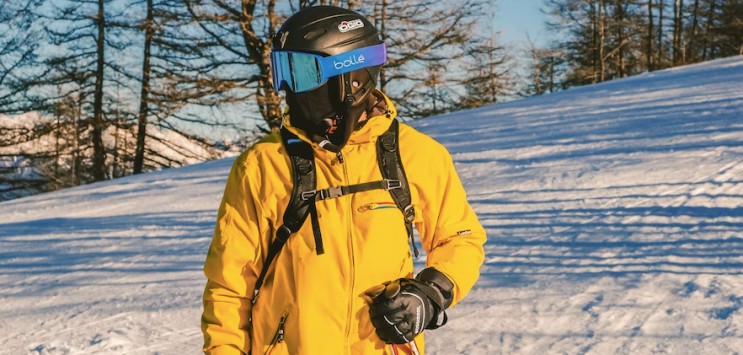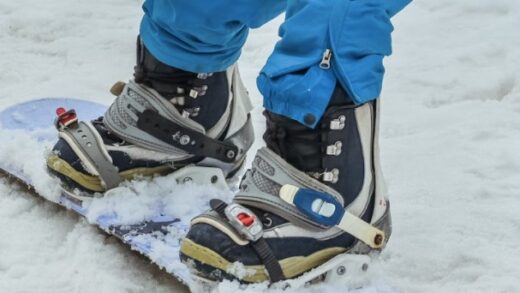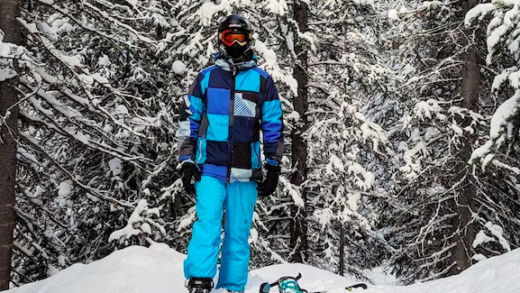How to Layer for Snowboarding?

Snowboarding is an exhilarating winter activity that people of all abilities can enjoy. Lacking up correctly for a day on the slopes is essential to stay warm, dry, and comfortable. This article will discuss the best way to layer up for a day of snowboarding. With this knowledge, you will be prepared to have a warm and comfortable snowboarding time. Let’s have a look!
Tips to follow to layer for snowboarding:
Base layer:
Base layers are an essential accessory for snowboarding. A base layer is designed to wick moisture away from the skin and regulate heat, keeping you warm and dry on the mountain. It is usually made from lightweight, breathable, natural, or synthetic fabrics and is worn against the skin under a snowboarding jacket and pants. The most important feature of the base layer is the ability to keep you warm when the weather is cold and wet. This is achieved by wicking moisture away from your skin, preventing “wind chill,” and acting as an insulator by trapping air against your body.
Base layers come in various styles and fabrics, so choose one based on your snowboarding needs. Synthetic layers are great for insulation but may cause discomfort if they are too tight or do not fit properly. For this reason, several people prefer natural fabrics such as wool, silk, and cashmere for their base layers. Polypropylene and polyester layers are also famous for their lightweight and breathability, which are great traits for athletes.
Mid layer:
Mid-layer is an essential item to consider when layering for snowboarding as it provides an extra layer of insulation and waterproofing while still allowing you to be flexible and comfortable on the slopes. This usually consists of specialized synthetic and natural fibers that retain heat while retaining breathability. This combination will ensure you remain warm, dry, and comfortable while snowboarding.
The mid layer usually sits between your base and outer layers, as an extra insulation shield. If you are looking for an extra layer of warmth, a thermal or fleece mid-layer is ideal, as this fabric provides plenty of insulation and breathability. Another benefit of mid-layer apparel is that many come with additional features, such as wind and waterproofing, which is critical when out on the slopes.
When choosing a mid-layer for snowboarding, it is crucial to consider the climate and conditions you will be in. Suppose you are in a colder region, and states are expected to be particularly cold. In that case, it is important to have an insulating mid-layer that is thick and warm and preferably constructed from breathable fabrics to keep you dry. Conversely, if temperatures tend to be warmer, then a thinner and more breathable mid-layer is ideal while providing a layer of insulation.
Top layer:
The top layer of clothing is especially important as it is the one that will be exposed to the coldest temperatures. It should be waterproof, breathable, and made from lightweight fabrics such as nylon, spandex or polyester with sealed seams. Insulated materials, such as down or synthetic fibers, can also be used for added warmth. You will also want to ensure that the top layer fits correctly and that there are no gaps or open spaces in which cold air can penetrate. The top layer should also be thin enough for easy mobility and thick enough to provide adequate insulation from the cold.
Adding accessories, such as a balaclava or face mask, ski goggles, and a snow hat, can also help you to stay warm. It is also important to ensure that your top layer is easily removable so you don’t become too hot while snowboarding. A good top layer is necessary to stay warm and protect you during snowboarding.
Conclusion:
In conclusion, it is important to layer up properly when snowboarding. Start with a breathable base layer, such as a synthetic material, and add insulating layers like wool or down. Always wear waterproof and windproof outer layers, a warm hat and gloves, and insulated boots for extended comfort and to stay dry. By layering properly, you can not only stay warm and dry but also enjoy a more comfortable and enjoyable snowboarding experience.


